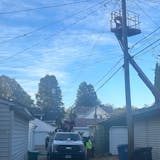For more than a century, one of the most beautiful sights in nature has prompted generations of Minnesotans to incubate thousands of tiny eggs, reclaim vast acreages of grasslands, purchase multiple sections of public lands, and wear out a battalion's worth of boot leather.
All for the flush of a rooster pheasant.
Implausibly florid, with colors ranging from bright red to iridescent dark green, the male ring-necked pheasant when rousted gains purchase in a blur, its relatively short wings beating three times per second as it rockets to a top speed of 45 miles an hour.
Among the state's first devotees of these Chinese imports were members of the Minnesota Game Protective League.
Armed with a $17,000 grant from the Minnesota Legislature, in 1917 they established a game farm on Lake Minnetonka's Big Island, where, along with bobwhite quail and ruffed grouse, pheasants were raised in an attempt to boost hunting prospects.
Secure in the prairies, grasslands, fence rows and cattails that were abundant at the time, pheasants flourished quickly. By 1931, when hunting was allowed in 41 counties, Depression-era scattergunners harvested 1 million Minnesota roosters during a 10-day season.
Now these many years later, on the cusp of what is expected to be a resurgent pheasant hunting season, Minnesotans have reason to celebrate not only the beauty of the state's most famous introduced species but its durability.
Deserving also of celebration are the efforts of countless Minnesotans who for more than a century have advocated passionately for a bird that is as pretty as a peacock, as wily as a coyote and whose survival instincts surpass those even of politicians.

